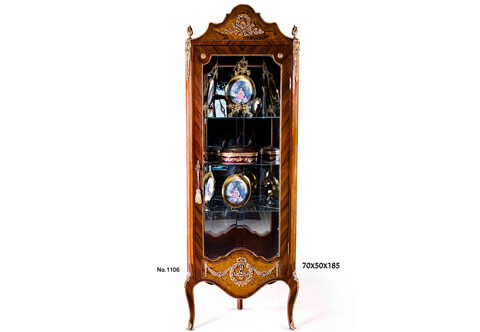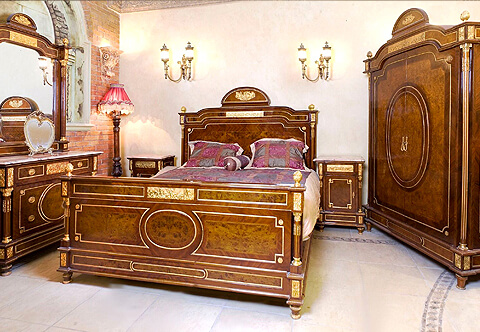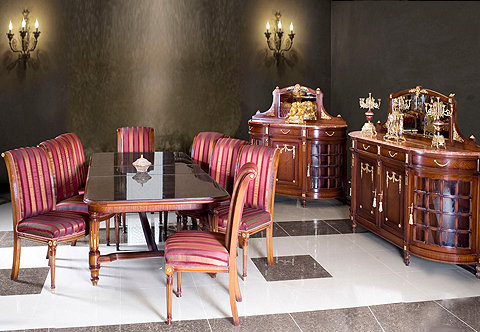French Neoclassical style mahogany and veneer inlaid ormolu-mounted kidney shaped Royal Grand Executive Bureau Plat
Ref#D-1620 | Description
A graceful French Neoclassical style mahogany and sans-traverse quarter veneer inlaid ormolu-mounted kidney shaped Royal Grand Executive Desk;
The veneer inlaid filet sectional moulded kidney shaped top above three drawers ornamented with fabulous and finely hand chiseled ormolu festoons, ormolu trims and lyre shaped handles, separated by blocks ornamented with ormolu rosettes, above two deep drawers to each side framed with ormolu trim connected with foliate C scrolls and scrolled ormolu handles;
The four side supports flanking the drawers ornate with ormolu Ancone style Brackets, all above a scalloped shaped plinth with blocks and faux drawers decorated with typical Neoclassical style ormolu mounts;
The back side has the same design all over, the central three sections ornamented with ormolu knotted ribbons and circular laurel wreath and ribbon tied laurel hanging tassels.
D-1620
H:96 x W:172 x D:83cm
Neoclassical Style
The Neoclassical Style:
The end of the Rococo period is usually considered with the death of Louis XV (1774). However, as with all artistic periods, there was always transition period where old and new ideas co-existed, and by the 1760s, Neoclassicism had emerged as a fully developed style, while early signs of Neoclassical influence were already present during the Rococo period. Interest in classical art which appeared with varying intensity at different historical times, were more scientific in character in the 18th century as its foundations had been laid by the ideas of the Enlightenment.
In 1711 the first excavations at Herculaneum began, with those on the Palatine Hill in Rome following between 1720 and 1727, and at the Hadrian's Villa at Tivoli between 1724 and 1742. The ruins at Herculaneum were discovered in 1738 and those in Pompeii in 1749. On-the-spot vedute (views) of Greek and Roman monuments by artists like Richard Dalton, James Stuart, Nicholas Revett and Piranesi fuelled the growing interest in classical art. The two series of etching by Giovanni Battista Piranesi (1720-1778) entitled Di verse maniere d'adornare I camini ed ogni altra parte delgi edifice (1769) and Vasi, candelabra, cippi, sarcophagi, tripodi, Lucerne ed ornamenti antichi (1768-1778) became style handbooks providing inspiration for the decorative arts. Madame de Pompadour herself, and later Madame Dubarry who were both inspirational muses of Rococo taste, also favoured the new goût grec, as the return to antiquity was called in France.
The emergence of Neoclassicism was possibly the result of cultural changes, but people were also beginning to tire of the graceful but by now rather sugary Rococo taste. One cannot rule out the possibility that the new aesthetic approach to interior decoration may also have provided a pretext for the newly formed court of Louis XVI to assert itself. The Marquis de Marigny, Madame de Pompadour's brother, was replaced as superintendent of the beaux arts by the Comte d'Angivillier.
However, while Louis XV participated vigorously in the artistic trends that flourished during his reign, the same could not be said for his nephew Louis XVI, who seemed entirely insensible to aesthetic considerations of any kind and certainly to the style that took his name. The very most that captured his attention was the mechanical furniture created for the court by Jean-Henri Reisener (1734-1806), a German cabinet-maker working in Paris. Just as the Louis XV style had inspired the Italian Rococo, so again the stylistic changes that were taking place in France were felt in Italy. Valentino Brosio defines as Louis XVI style all Italian furniture until 1795, and reserves the term "Neoclassical" for the successive Directoire Empire and Restauration periods.
Guiseppe Morazzoni, however after pointing out various differences between the French and Italian styles, defines early Neoclassicism as the style that was developed in Italy during the time of Louis XVI. >Ever alert to changes of taste in Versailles, Turin embraced Neoclassicism early but re-elaborated it. The taste for the antique, relived of the "burden" of archeology, retained some traces of Rococo frivolity; and Greek friezes and carved gesso beading against Rococo-inspired cream, pale green and blue lacquered grounds would soon replace rocaille carving. A typical Piedmontese feature for the sofa was the medallion motif, which would be positioned in the centre of the seat back. More popular in Piedmont than in any other region was the demilune commode, which was embellished with veneers of precious woods and inlay. By disregarding the subdivisions for drawers and compartments, figurative scenes or geometric marquetry could be freely developed.
The flat surfaces of the Neoclassical style inspired cabinet-makers like Ignazio Revelli (1756-1836) and his son Luigi (1776-1856) to create real "marquetry paintings" of landscapes, scenic ruins and architectural perspectives, taken from their own drawings, or, more frequently, from watercolors or prints of notable artists of the time such as Piranesi. Revelli's efforts, similar to Guiseppe Magiolini's (1738-1814) in Lombardy, represented a period of transition from Louis XVI to the 19th century.
Just as Pietro Piffetti was the chief exponent of the Piedmontese Rococo style, so Guiseppe Maria Bonzanigo (1745-1820), official wood carver and designer to the crown, played an important role in defining the Louis XVI style in Pedimont.
Nevertheless, his classicism was expressed in the clarity of his furniture's architectural structure, enhanced by the rich decorative apparel with its al antica motifs. His skill and precision in carving placed him squarely in line with the expressive vocabulary of the next century.


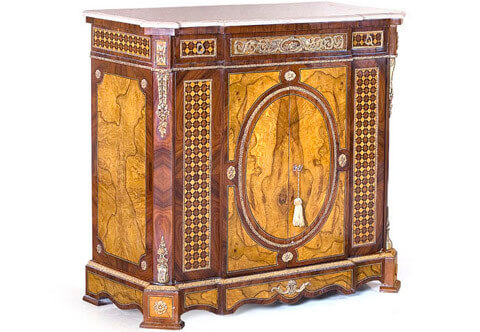
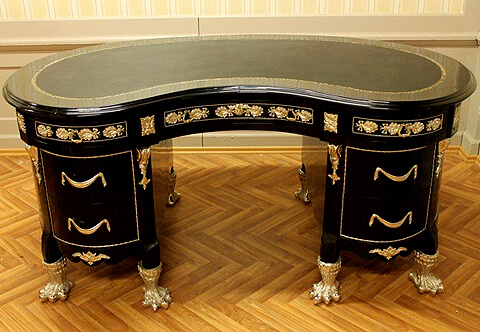
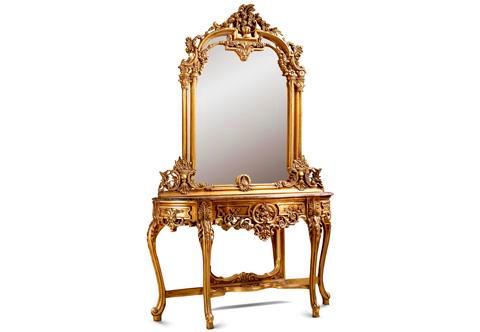
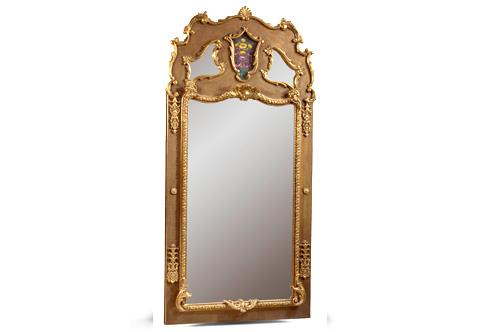
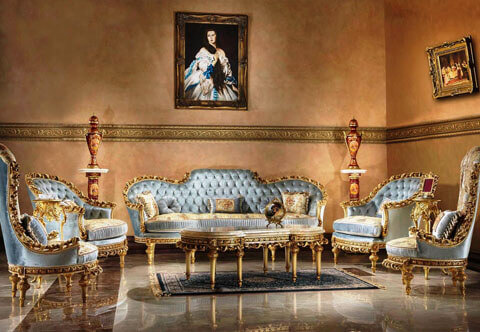
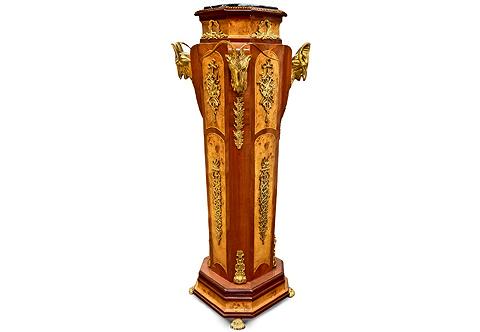
.jpg)
